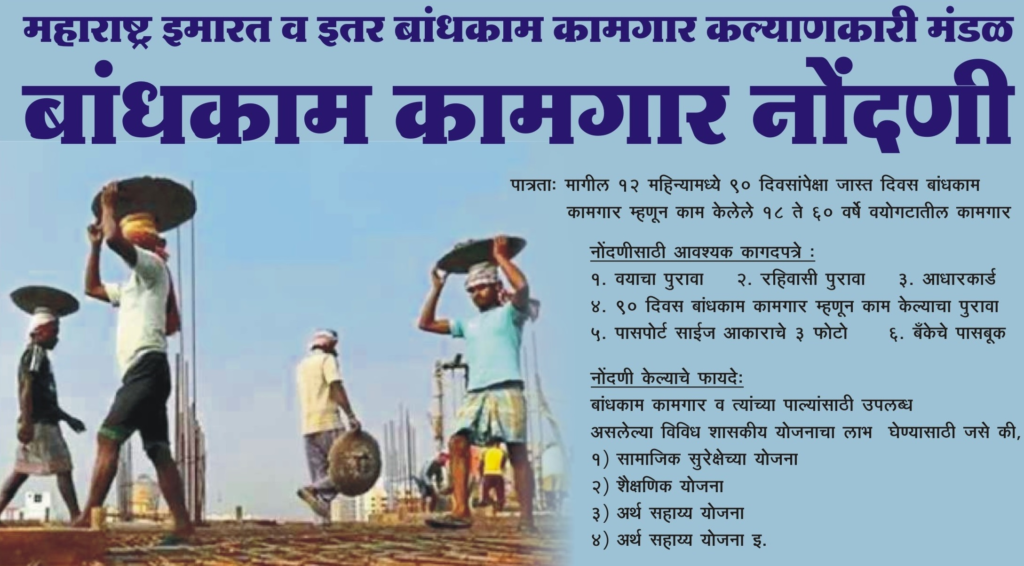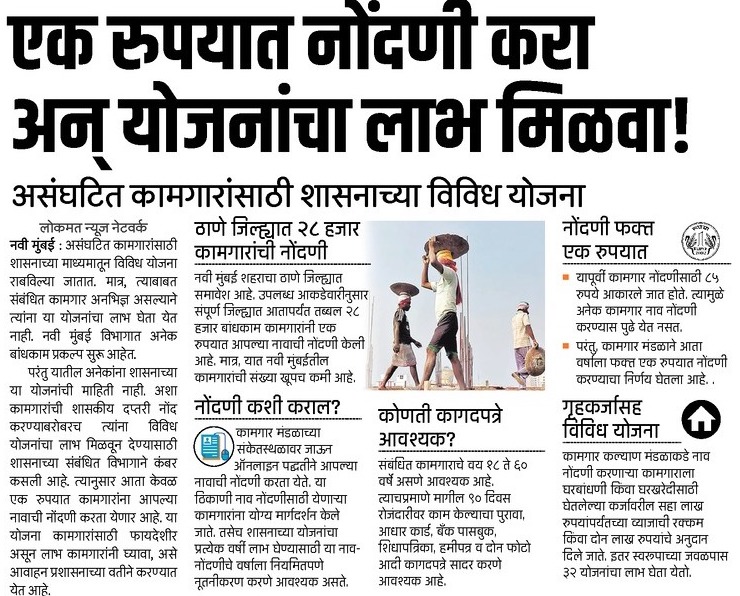India’s workforce, particularly the Bandhkam kamgar or construction workers, forms the backbone of the nation’s development. Understanding their rights and the landscape of labor laws is crucial for their protection and growth within the economy. This guide provides a thorough insight into the complexities and opportunities within this sector, authored by experts well-versed in Indian labor regulations.
Bandhkam kamgar, pivotal to India’s booming infrastructure sector, is safeguarded by various labor laws. These rights include fair wages, timely payment, safe working conditions, and access to redress mechanisms. Recent legislative efforts have further strengthened these protections, recognizing the essential contributions of these workers.
How can Bandhkam Kamgar protect their labor rights?
Awareness is the first line of defense. By understanding their entitlements under national and state legislation, Bandhkam Kamgar can identify violations and seek timely intervention. Legal aid initiatives, non-profit organizations, and labor unions play a significant role in the advocacy and protection of these rights.
- Education and Awareness: The primary step toward protecting their rights is for Bandhkam Kamgar to be educated about them. They need to understand the minimum wage, safety regulations, working hours, and other legal entitlements. Workshops, informational pamphlets, community meetings, and the formation of discussion groups can help disseminate valuable information.
- Unionization: Joining a trade union can provide Bandhkam Kamgar with stronger bargaining power. Unions often have the resources and legal expertise to advocate for workers’ rights effectively, negotiate on their behalf, and offer protection against unlawful work practices. They also serve as a support system that can guide workers through legal processes.
- Legal Aid Access: Many non-profit organizations and legal aid clinics offer free or low-cost services to workers, particularly those in low-paying sectors like construction. These services can guide Bandhkam Kamgar through the process of reporting violations, filing complaints, or seeking compensation. Knowing where to access these resources is crucial.

Are there any recent labor law changes affecting Bandhkam Kamgar?
Yes, recent labor reforms aim to simplify the regulatory landscape, enhance transparency, and improve the enforcement of labor laws. These changes are designed to protect Bandhkam Kamgar from exploitation, ensuring fair compensation and improving dispute resolution mechanisms.
What are the major challenges faced by bandhkam kamgar in the job market?
Despite being integral to India’s economy, Bandhkam Kamgar faces challenges including job security, vulnerability to economic cycles, limited access to healthcare, and skill development opportunities. These complexities require multifaceted solutions, involving both governmental policy initiatives and employer best practices.
- Unstable Employment: Many construction workers are hired on a project-to-project basis, leading to periods of unemployment between jobs. This lack of job security, coupled with the absence of a stable income, contributes to financial instability and stress.
- Lack of Legal Protection: A significant portion of Bandhkam Kamgar are employed in the informal sector, meaning they work without formal contracts. This status makes them vulnerable to exploitation, non-payment of wages, and dismissal without notice. They often miss out on essential legal protections and social security benefits that formal employment contracts typically provide.
- Unsafe Working Conditions: Construction sites are often hazardous, posing risks of accidents due to falls, heavy machinery, and unsafe handling of materials. While there are safety regulations, they’re not always enforced, leading to unsafe working conditions and, in some cases, severe injury or death.
- Inadequate Living Conditions: Migrant construction workers typically live in temporary housing provided by employers at the construction sites. These accommodations are often overcrowded, lack basic facilities, and offer poor sanitary conditions, which can lead to health issues.

How to file a complaint for labor rights violations as a bandhkam kamgar?
Filing a complaint is a fundamental right. Workers can approach local labor authorities, use helpline numbers, or seek assistance from their respective unions. Digital portals have also been introduced for ease of filing and tracking complaints, ensuring accountability and prompt action.
What are the key benefits and incentives available to Bandhkam Kamgar?
Several schemes provide health insurance, accident coverage, and financial assistance for education and housing. Recognizing the physically demanding nature of their work, these benefits are crucial for the well-being and financial stability of Bandhkam Kamgar and their families.
- Welfare Boards and Schemes: Various states in India have established Construction Workers’ Welfare Boards, operating under the Building and Other Construction Workers’ Act (BOCW Act). These boards run schemes providing numerous benefits, including:
- Pension benefits for retirees.
- Financial assistance for education.
- Maternity benefits for female workers.
- Medical expenses for treatment.
- Compensation in case of accidents or death at work.
- Health and Safety Protection: Legislation mandates employers to ensure the health and safety of construction workers. This includes providing protective gear, safe and hygienic working conditions, and access to first aid and medical facilities.
- Minimum Wage Guarantee: The government stipulates minimum wage regulations, ensuring that employers cannot pay workers below a certain hourly rate, thereby safeguarding their basic standard of living.
- Insurance Coverage: Some state schemes offer life insurance and health insurance coverage, either free of cost or with minimal premiums, to provide security against health issues and accidents for workers and their families.

How to join a labor union as a bandhkam kamgar?
Unions provide a collective voice. Bandhkam Kamgar can join by applying through regional labor union offices, contributing to the strength and unity of the workforce. These unions play a pivotal role in negotiation, protection of worker rights, and providing a platform for shared concerns.
What are the prospects for bandhkam kamgar in the current economic climate?
The economic landscape poses both challenges and opportunities. With global advancements and infrastructural projects, the demand for skilled bandhkam kamgar is on the rise. Upskilling, technological adaptation, and governmental support are imperative for harnessing these opportunities.
What are the differences between formal and informal bandhkam kamgar sectors?
- Employment Regulation and Protection:
- Formal Sector: Employment is regulated, and workers have legal protections. Formal sector employers are required to comply with national and state labor laws, including those related to minimum wages, employment contracts, working hours, and safety standards. Workers are often registered with various government welfare schemes and are under the purview of labor enforcement agencies.
- Informal Sector: Workers here face a lack of regulation and protection. Many are self-employed or work for employers who evade labor laws. As a result, informal sector workers often lack legal recourse in disputes, may be paid less than the minimum wage, and are not covered by most welfare legislation.
- Job Security and Benefits:
- Formal Sector: Jobs tend to be more stable, with regular incomes, and often come with benefits like healthcare, paid leave, pensions, and insurance. There’s a clear employer-employee relationship, and workers may receive additional perks such as bonuses and professional development resources.
- Informal Sector: Workers frequently deal with job insecurity, irregular income, and a lack of employment benefits. They are often hired for temporary or seasonal work, and the absence of a formal contract means they can be let go without notice or severance pay.
The formal sector adheres to regulatory compliances, offering more protections and benefits to workers. In contrast, the informal sector, while providing employment flexibility, often comes with job insecurity and limited access to social security benefits, emphasizing the need for comprehensive policy inclusion


Leave a Reply